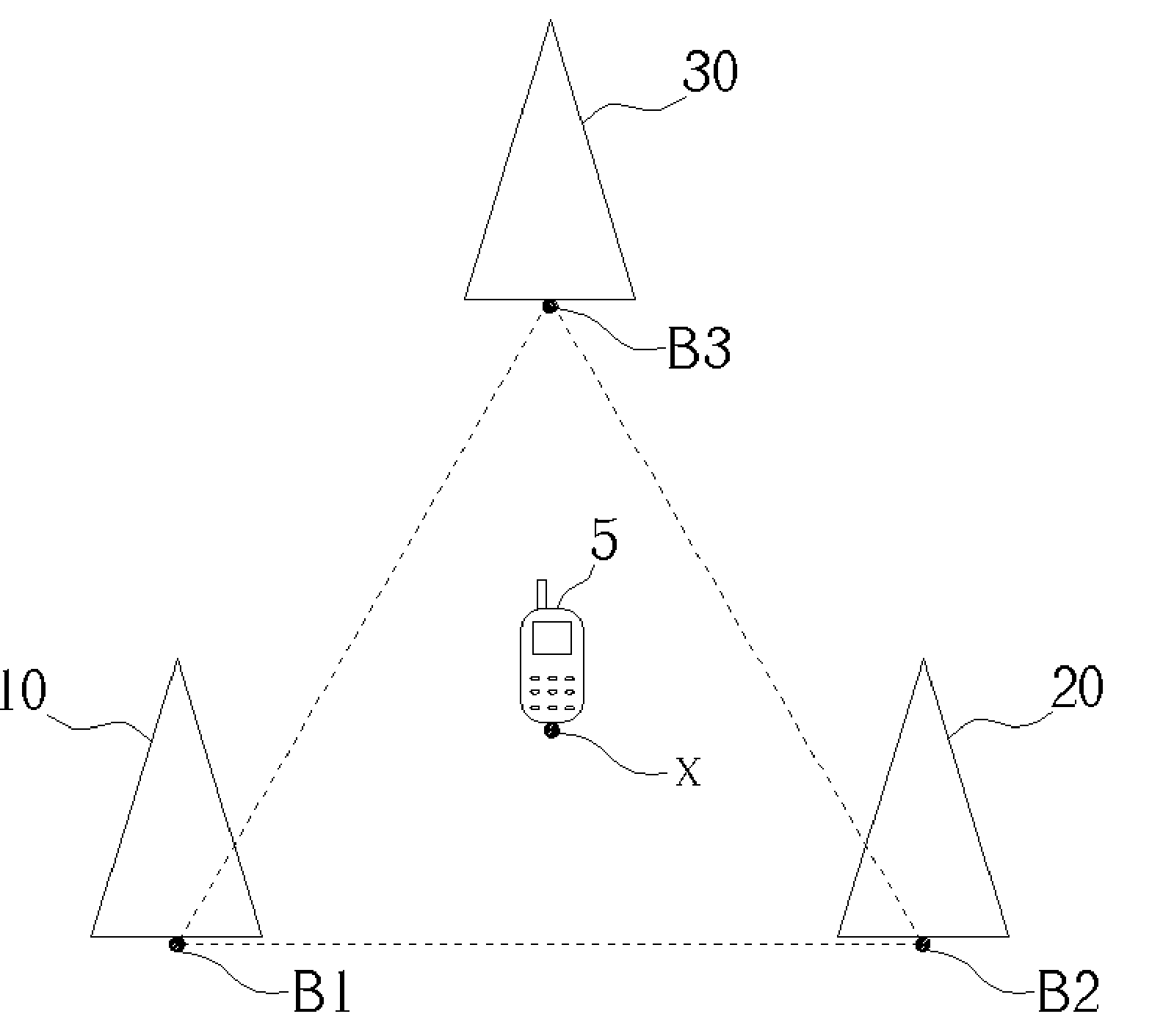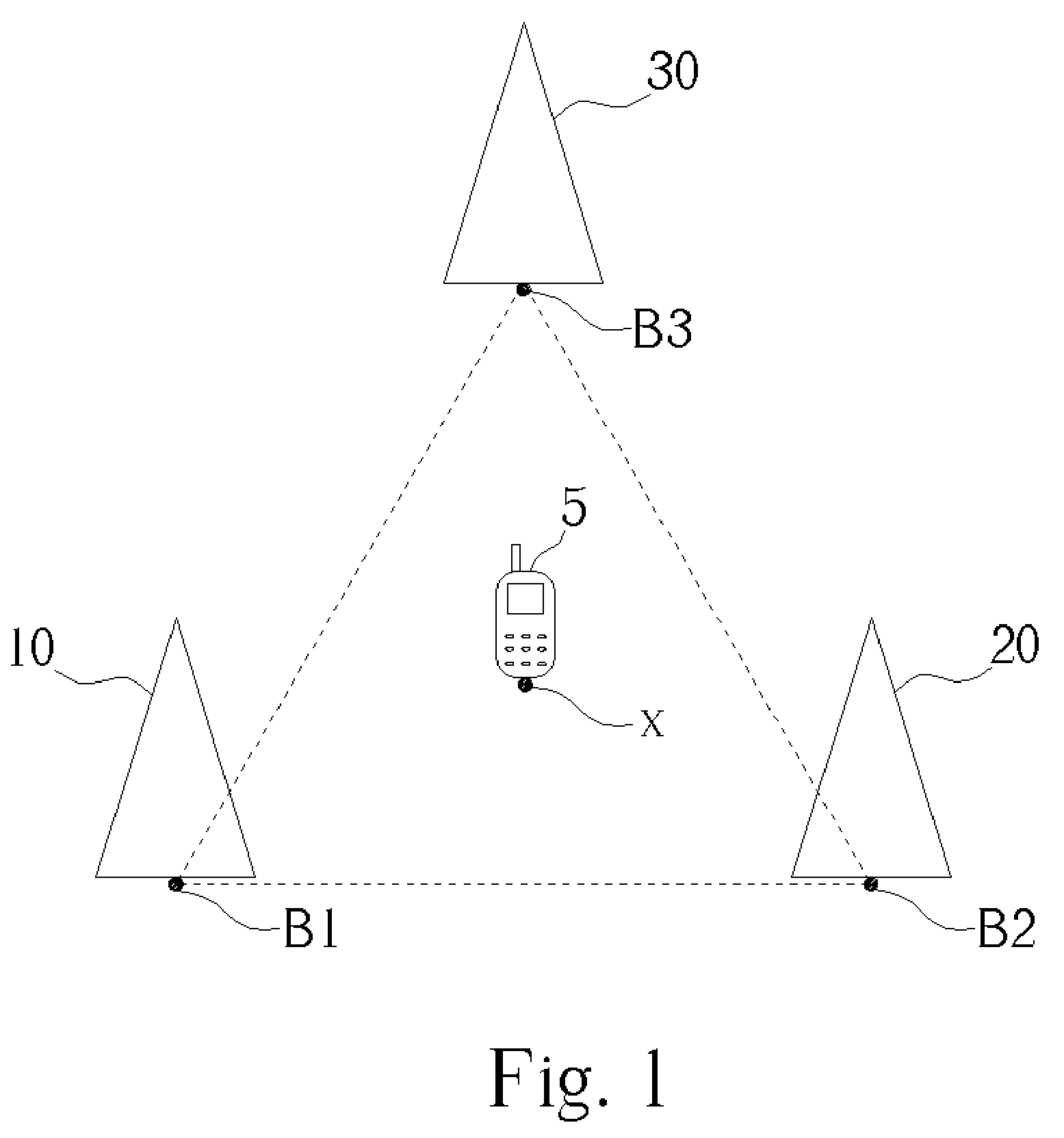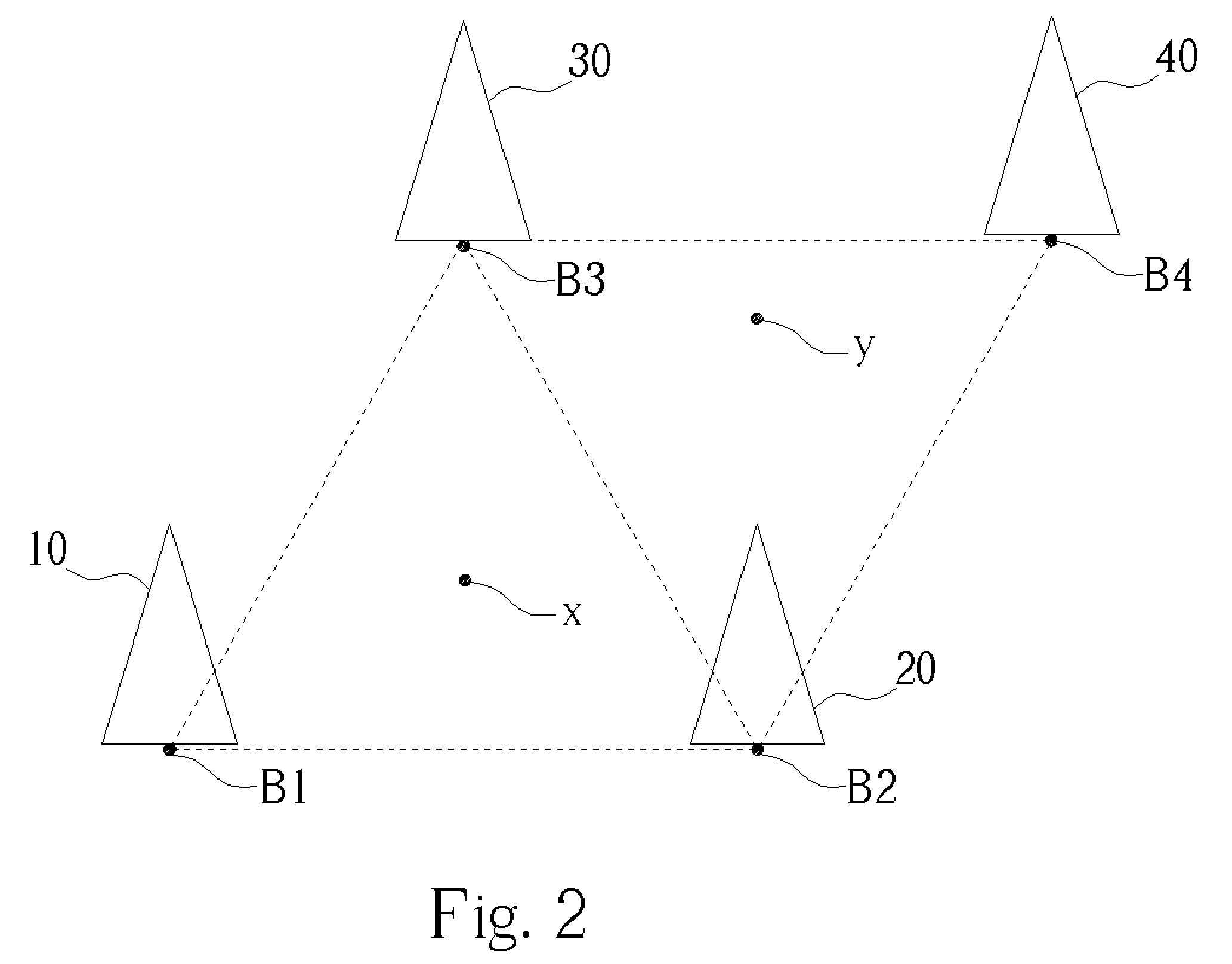Method for using base station power measurements to detect position of mobile stations
a technology of power measurement and mobile station, applied in the direction of measuring devices, instruments, electrical equipment, etc., can solve the problems of inability to receive good signals, gps receivers cannot receive good signals inside buildings, and gps based approaches are not perfect ways to detect the position of mobile stations
- Summary
- Abstract
- Description
- Claims
- Application Information
AI Technical Summary
Benefits of technology
Problems solved by technology
Method used
Image
Examples
Embodiment Construction
[0019] The goal of the present invention method is to measure the RSSI levels of base stations in neighboring cells to calculate the location of a mobile station. If the GPS location information of each base station can be known beforehand, then the location information derived from the base station RSSI measurement process can be translated to GPS information directly.
[0020] In the CDMA protocol, the GPS location information of each base station is broadcast through system information messages. Currently, in the GSM 2G and 2.5G (GPRS) protocols, GPS information is not provided, but it is included in the GSM 3G Wideband CDMA (W-CDMA) protocols. It is a small enhancement for GSM-GPRS protocols to include the GPS information to be associated with each base station, and including the GPS information will help to provide a better location service through the GSM communication protocol. The mapping between the base station's GPS location and its base station identification is a one-to-o...
PUM
 Login to View More
Login to View More Abstract
Description
Claims
Application Information
 Login to View More
Login to View More - R&D
- Intellectual Property
- Life Sciences
- Materials
- Tech Scout
- Unparalleled Data Quality
- Higher Quality Content
- 60% Fewer Hallucinations
Browse by: Latest US Patents, China's latest patents, Technical Efficacy Thesaurus, Application Domain, Technology Topic, Popular Technical Reports.
© 2025 PatSnap. All rights reserved.Legal|Privacy policy|Modern Slavery Act Transparency Statement|Sitemap|About US| Contact US: help@patsnap.com



